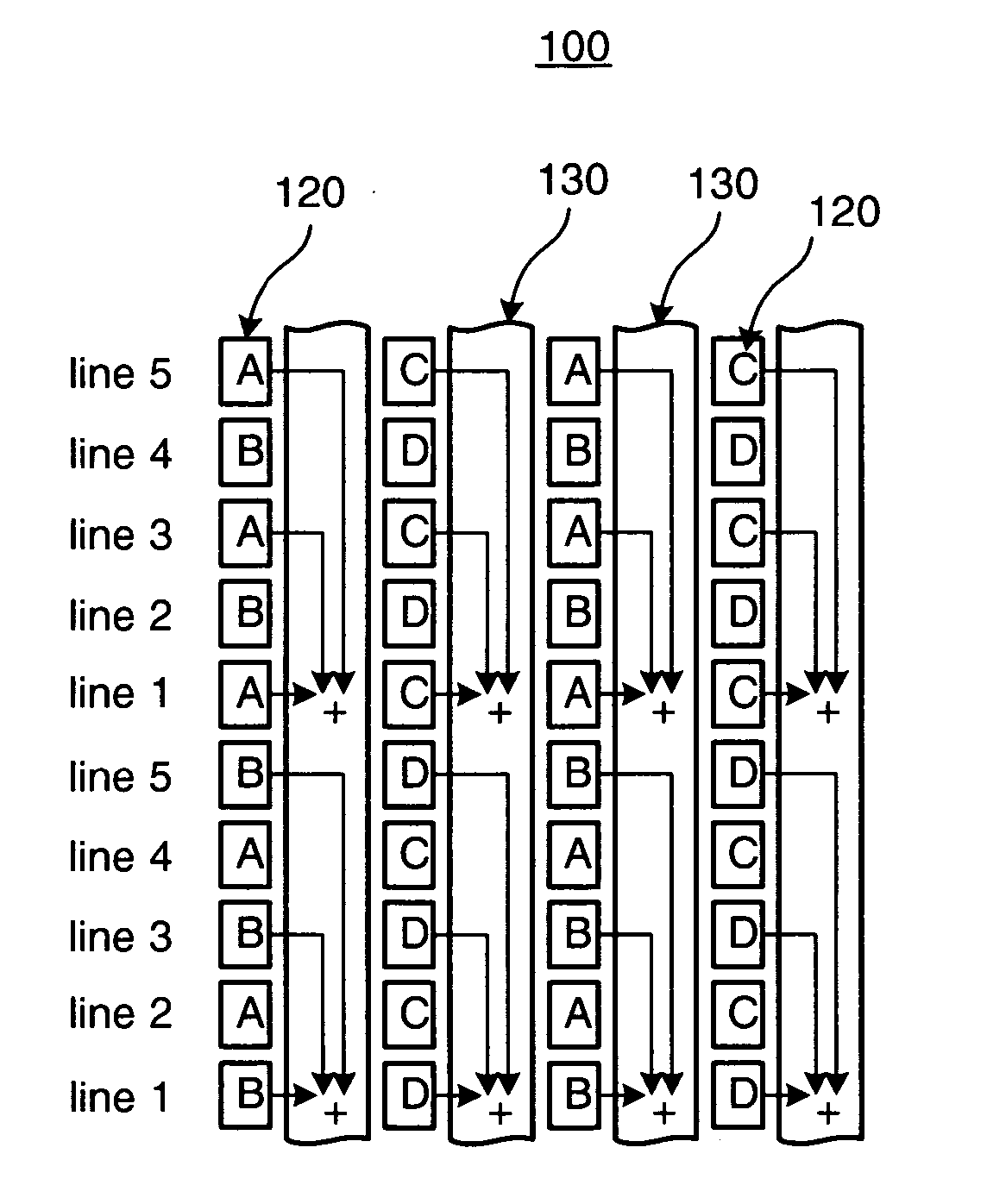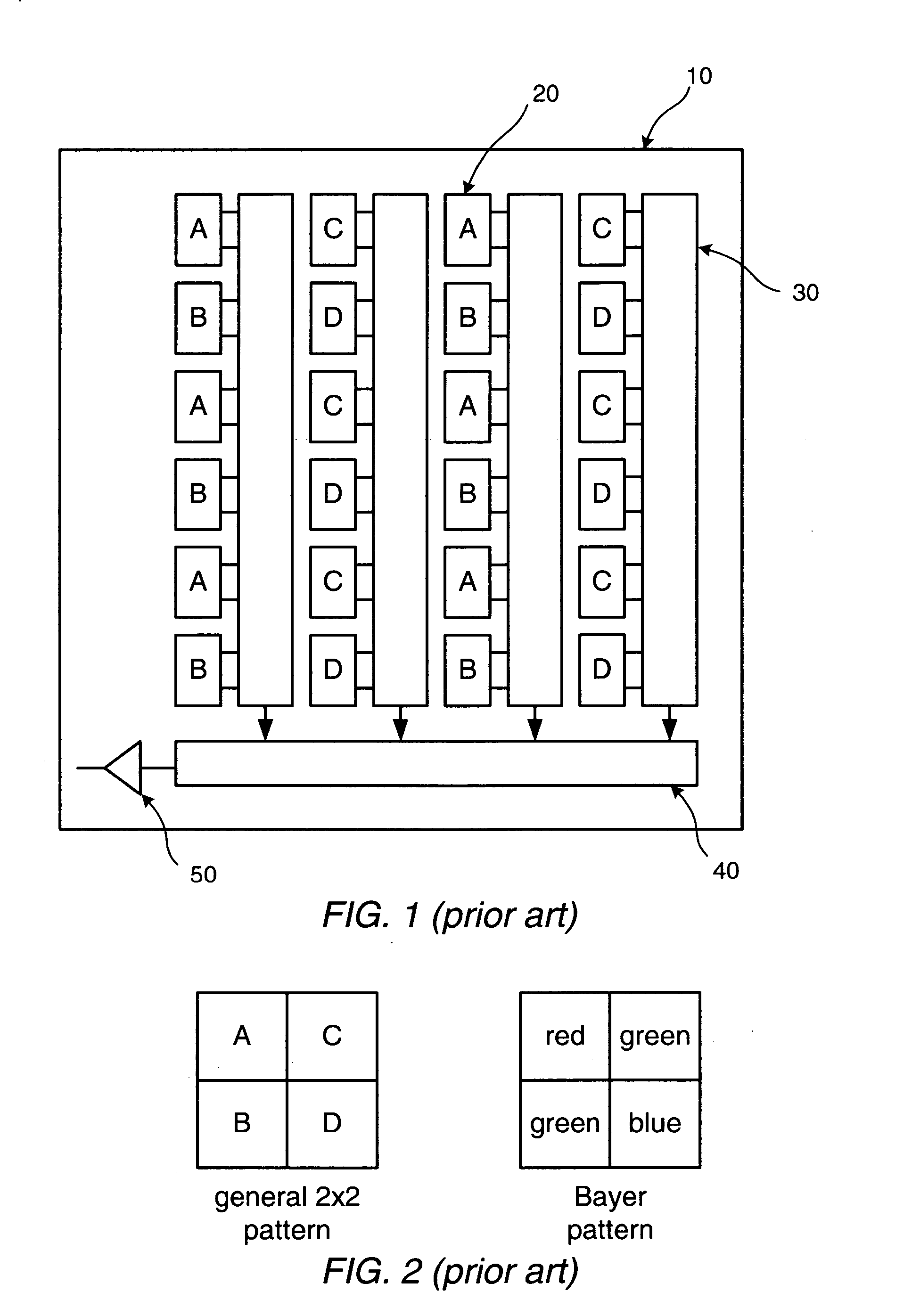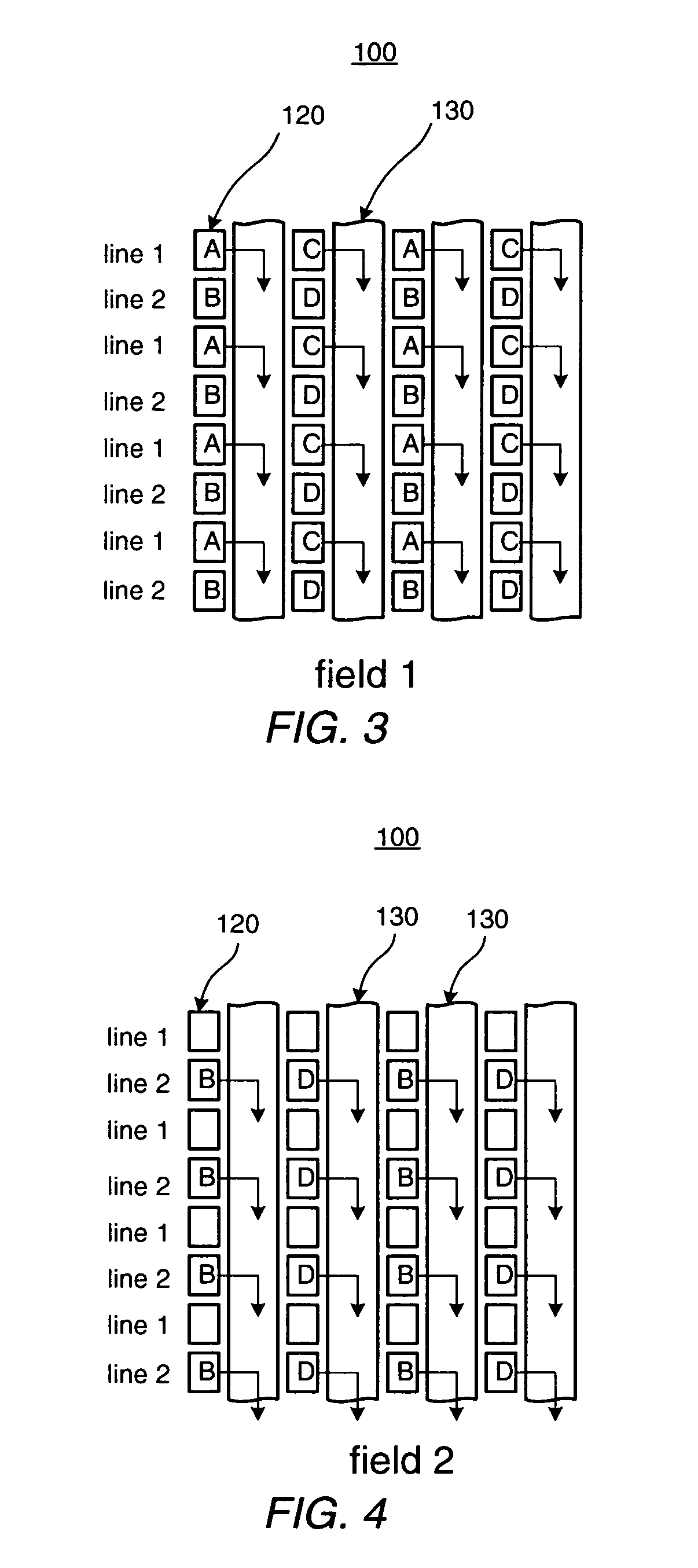Image sensor for still or video photography
a technology of image sensor and still photography, applied in the direction of picture signal generator, television system scanning details, television system, etc., can solve the problems of only 4% of the photodiode used in sub-sampling images, still leaving some pixels un-sampled, and inconvenient, so as to reduce the resolution of the image sensor
- Summary
- Abstract
- Description
- Claims
- Application Information
AI Technical Summary
Benefits of technology
Problems solved by technology
Method used
Image
Examples
first embodiment
[0051] the sequence of steps to reduce the image sensor 100 resolution by a factor of 5 is shown in FIGS. 6a through 6c. The rows of photodiodes 120 are grouped into five sequentially numbered lines. The first step in FIG. 6a is to simultaneously transfer charge from all of the odd numbered lines from the photodiodes 120 to the VCCD 130. The first set of three lines 1, 3, and 5 transfer colors B and D into the VCCD 130. The next set of three lines 1, 3, and 5 transfers colors A and C into the VCCD 130. If the camera is used outside in bright sunlight, the summing of pixels will enhance the sensitivity such that a very short exposure time will be required. The exposure time might be as short as 100 to 200 μs. If the photodiodes 120 from color A are transferred to the VCCD 130 before photodiodes 120 from color B, the color B photodiodes will receive a longer exposure time than the photodiodes 120 from color A. Thus, video recording with very short exposure times will show an undesirab...
second embodiment
[0057] After the summing process, the charge packets in the VCCD 130 as shown in FIG. 6c are not equally weighted. One charge packet contains charge from 3 photodiodes of color B and another contains charge from 2 photodiodes of color B. An alternate second embodiment of the summing process to obtain charge packets of equally weighted colors is shown in FIGS. 9a, 9b and 9c. In FIG. 9a, lines 1 and 5 are summed together and the line 3 photodiodes 120 are not transferred to the VCCD 130. Next in FIG. 9b, charge from lines 2 and 4 are transferred and summed together in the VCCD 130. The step shown in FIG. 9b may be omitted to reduce the number of lines to read out to the image sensor by half. Skipping the reading out of lines 2 and 4 would cause some loss of resolution and color information but the faster frame rate might be more desirable. The resulting summed charge packets in FIG. 9c are transferred in parallel towards a serial readout CCD register(s). The photodiodes 120 from line ...
third embodiment
[0059] the charge summing process is shown in FIGS. 11a, 11b, and 11c. In FIG. 11a charge from lines 4 and 5 are simultaneously transferred from the photodiodes 120 to the VCCD 130. The charge packets in the VCCD are kept separate to avoid mixing colors. Then the two charge packets are transferred down two lines in the VCCD. This aligns the charge packet that originated from line 5 with the photodiode in line 3. The charge packet that originated from line 4 will be aligned with the photodiode in line 2. Next in FIG. 11b, charge is transferred from the photodiodes in lines 2 and 3 into and on top of the charge packets already in the VCCD. The result is shown in FIG. 11c where there are now two charge separate packets of two colors in each column. The photodiodes in line 1 are never transferred into the VCCD. The charge packets in the VCCD are transferred in parallel towards a serial readout CCD register(s).
[0060]FIG. 12 shows the charge packet clocking details. FIG. 12 is a cross sec...
PUM
 Login to View More
Login to View More Abstract
Description
Claims
Application Information
 Login to View More
Login to View More - R&D
- Intellectual Property
- Life Sciences
- Materials
- Tech Scout
- Unparalleled Data Quality
- Higher Quality Content
- 60% Fewer Hallucinations
Browse by: Latest US Patents, China's latest patents, Technical Efficacy Thesaurus, Application Domain, Technology Topic, Popular Technical Reports.
© 2025 PatSnap. All rights reserved.Legal|Privacy policy|Modern Slavery Act Transparency Statement|Sitemap|About US| Contact US: help@patsnap.com



